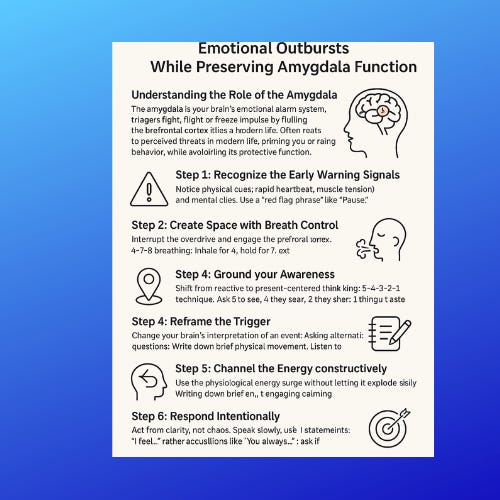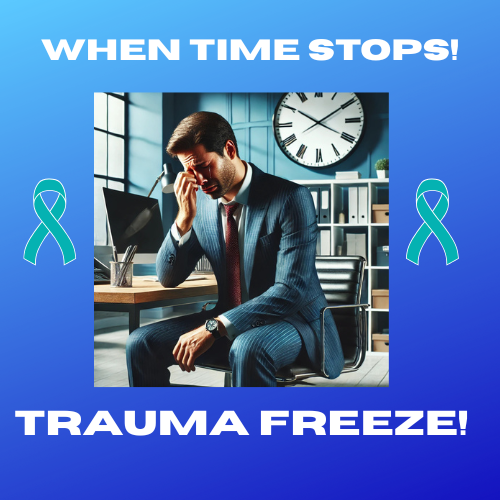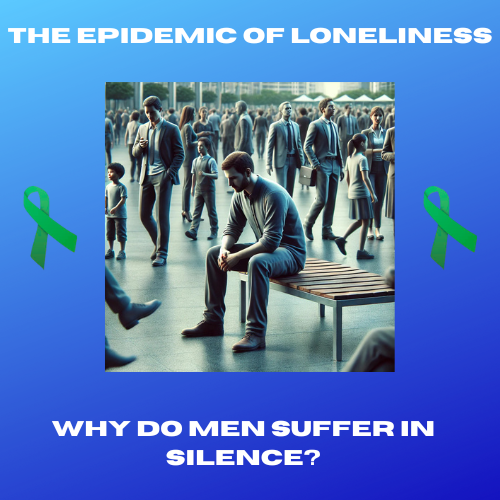Why do we tend to be cruelest to the people we love the most?
The Puzzle of Love and Cruelty
Why Do We Hurt the Ones Who Care for Us Most?
You’ve been there.
The words are out before you even think.
Sharp.
Cutting.
And they’re aimed directly at the person you swore to love, protect, or at the very least… respect.
Why is it that the people who see our best side also get the worst of us? Why do we pour patience into strangers, but unleash impatience, criticism, or even cruelty at those closest to us?
A Quiet Evening That Turned Into a Storm.
One evening, after a long, exhausting day, a couple sat together in the living room. There was no argument brewing, no tension in the air, until one small comment about an unpaid bill turned the air electric. A voice rose. Another snapped back. And within minutes, what had been a peaceful night turned into a fight that left them both retreating to separate rooms.
Neither could explain why it escalated so fast. It wasn’t about the bill. It never is.
The Paradox of Intimacy and Emotional Safety
The truth is, the closer we are to someone, the more likely we are to relax our filters. Emotional safety is a beautiful thing, but it can also be dangerous when we confuse it with a free pass to offload our worst moods, frustrations, and stress onto someone else.
The Science of Closeness and Conflict
Familiarity Breeds Emotional Risk
We’ve all heard the saying familiarity breeds contempt. It’s not entirely true; it’s more accurate to say familiarity breeds emotional vulnerability. When someone knows you deeply, they know exactly where your emotional buttons are located… and sometimes, you push theirs before you even know it.
Emotional Safety and the “Permission” to Unleash
Our brains are wired to conserve energy. That means when we’re with strangers, we carefully manage our tone, words, and reactions. But at home? We let the guard down. Unfortunately, that “permission” can turn into a habit of unloading raw emotions on loved ones without considering the fallout.
The Role of Psychological Proximity in Behavior Changes
The closer the relationship, the higher the psychological stakes. Our brains interpret intimate relationships as “safe zones,” so when stress builds, the subconscious mind says: Release here, it’s safe.
The problem?
Safe for you doesn’t mean safe for them.
The Three Brain-Based Reasons We Save Our Worst for Our Closest
Reason 1: Amygdala Hijack and Threat Detection
The amygdala, your brain’s alarm system, reacts fast, before logic kicks in. In relationships, perceived slights or misunderstandings can trigger this alarm even when there’s no real threat. You’re not reacting to your partner; you’re reacting to the brain’s split-second interpretation of danger.
Reason 2: Emotional Load Dumping and Ego Preservation
When life piles stress on you, your brain seeks the path of least resistance to unload. Sadly, that path often leads straight to your partner. We dump our stress where it’s easiest, not where it’s healthiest.
Reason 3: Relationship as a Secure Base
Psychologists call it “secure base theory”: the people we trust most are the ones we assume will stay, even when we act out. This is why you may give strangers the benefit of the doubt but expect your partner to “understand” every rough mood.
Step-by-Step Process for Managing Emotional Outbursts While Preserving Amygdala Function
Understanding the Role of the Amygdala
The amygdala is your brain’s emotional alarm system, an ancient survival mechanism designed to keep you alive. It rapidly scans your environment for danger and, when it perceives a threat, triggers the fight, flight, or freeze response. This activation floods your body with stress hormones like cortisol and adrenaline, priming you for immediate action.
In moments of true danger, this is lifesaving. But in modern life, the amygdala often reacts to perceived threats that are emotional or social criticism from a colleague, a heated conversation with a partner, or even a memory of past trauma. When it becomes over-activated, it can override the rational thinking of the prefrontal cortex, leading to emotional outbursts, impulsive decisions, and strained relationships.
The goal is not to silence or suppress the amygdala; doing so would dull your ability to detect real danger, but to regulate its response. This means training your nervous system to distinguish between actual threats and emotional triggers, preserving its protective function while preventing it from hijacking your behavior. Through conscious self-regulation techniques, you can keep your emotional radar sharp, you’re thinking clear, and your reactions measured, even in high-pressure moments.
Step 1: Recognize the Pattern (Awareness Building)
Keeping an Emotional Log
For one week, jot down the moments when you snapped or got irritated—who it was with, and what was happening right before.
Identifying Proximity Triggers
Notice if certain tones, habits, or times of day make you more reactive at home.
Noticing Physical Signals of Escalation
Do your shoulders tense? Does your voice tighten? Awareness of these early signs gives you a chance to redirect before you explode.
Step 2: Create Emotional Circuit Breakers
The STOP Technique
Stop what you’re doing, take a breath, observe your thoughts and body, and proceed with intention.
The 10-Second Rule
Before responding in a heated moment, count to ten slowly. It’s a mini reset for your nervous system.
Using a Personal Code Word
Agree on a code word with your partner that signals: “I need to step away before I say something I regret.”
Step 3: Discharge Stress Proactively
Scheduling Daily Stress Release
Don’t wait until you’re about to snap build in activities that burn stress daily.
Progressive Muscle Relaxation
Tense and release each muscle group, one at a time. This trains the body to let go.
Stress Acknowledgment Without Projection
Say: “I’ve had a tough day,” instead of unleashing the emotional storm.
Step 4: Communicate Your Emotional State
Using “I” Statements
“I feel…” instead of “You always…” keeps the conversation in safe territory.
Pre-Conflict Stress Sharing
If you know you’re on edge, tell them before the conversation even starts.
Establishing Emotional Space Signals
A prearranged hand gesture or phrase can signal “I need a moment” without escalating.
Step 5: Establish Healthy Regulation Rituals
Physical Nervous System Reset
Cold showers, exercise, or even a brisk walk can bring your system back to baseline.
Co-Regulation Practices
Sit close, breathe together, or do a calm activity side-by-side to reconnect.
Post-Stress Reconnection
After cooling down, intentionally engage in something positive together.
Step 6: Repair and Reconnect
Owning Emotional Misfires
Admit when you’ve used them as an “emotional lightning rod.”
Specific Apology Technique
Instead of “I’m sorry,” say: “I’m sorry I snapped at you about the dishes. It wasn’t fair.”
Expressing Gratitude and Planning Ahead
Thank them for their patience and suggest how to handle it better next time.
Step 7: Long-Term Amygdala Training
Mindfulness as Brain Gym
Five minutes of daily mindfulness can strengthen the link between your prefrontal cortex and amygdala.
Exposure Therapy for Irritation Tolerance
Practice tolerating small annoyances without reacting.
Celebrating Micro-Wins
Acknowledge the times you paused instead of lashing out.
When Professional Help is Needed
Signs That You’re Stuck in a Toxic Cycle
If every conflict feels like a repeat episode, you may need outside help.
How Therapy Can Reset Your Emotional Defaults
A therapist can help rewire the patterns that keep you reactive.
Couples vs. Individual Support
Sometimes you need both, a safe space for your healing and a shared space for the relationship.
Why This Matters for Relationships and Mental Health
Preventing Resentment Build-Up
Unchecked emotional outbursts create silent walls of resentment.
Creating Safety Without Silence
Healthy communication protects both partners without anyone having to “walk on eggshells.”
Emotional Maturity as Love in Action
Love isn’t just a feeling; it’s the discipline of choosing patience when it’s hardest.
Choosing Connection Over Cruelty
Your closest relationships should be your sanctuary, not your battlefield. The challenge, and the opportunity, is to create an environment where both people can feel safe, heard, and valued even in moments of stress.
Cruelty may sometimes slip in through the cracks of exhaustion and frustration, but it doesn’t have to stay. Every pause, every redirected reaction, every intentional act of kindness… they all add up to a love that grows stronger, not weaker, in the face of life’s pressures.
FAQs
1. Why do I get irritated more easily with my partner than with strangers?
Because your brain perceives them as “safe,” it lets down emotional filters, for better or worse.
2. How long does it take to retrain my emotional responses?
With consistent practice, some people notice changes in a few weeks, but deep rewiring can take months.
3. What if my partner is the one lashing out at me?
Set boundaries, communicate clearly, and if needed, seek counseling, either together or separately.
4. Can mindfulness change brain chemistry?
Yes. Research shows it strengthens neural pathways that regulate emotional reactions.
5. How can I tell if my relationship has moved from conflict to emotional abuse?
If there’s a pattern of intentional harm, control, or fear, it’s abuse, not just conflict. Seek help immediately.
FREE DOWNLOAD.
© 2025 www.soundthetrumpet.org










